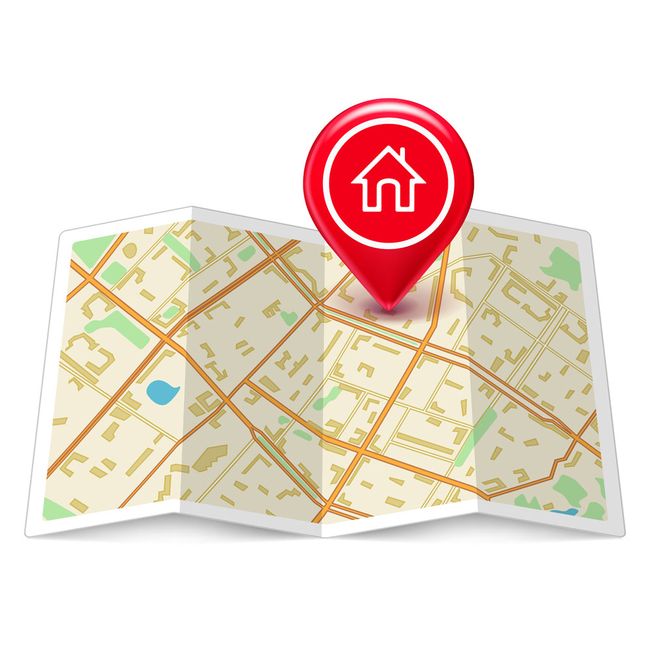前段时间,在项目上做了一些地图相关的功能,解决了三个特殊需求,在此总结一下,以备日后使用:
1. MKOverlayView的拖动实现;
2. 大头针pin 的拖动实现;
3. 随地图的缩放而缩放的焦点框功能实现;
1. MKOverlayView的拖动实现
首先,直接给MKOverlayView视图本身添加一个拖动手势是不可行的,因为MKOverlayView不是通过简单的addSubview:添加到地图图层上的。
MKOverlayView视图的现实过程:
1.1 使用MKPolygon的addOverlay:方法来添加OverlayView数据
源overlay,其中包括了图层的经纬度坐标数据。
CLLocationCoordinate2D leftUp = CLLocationCoordinate2DMake(center.latitude - gap, center.longitude - gap);
CLLocationCoordinate2D rightUp = CLLocationCoordinate2DMake(center.latitude + gap, center.longitude - gap);
CLLocationCoordinate2D leftDown = CLLocationCoordinate2DMake(center.latitude - gap, center.longitude + gap);
CLLocationCoordinate2D rightDown = CLLocationCoordinate2DMake(center.latitude + gap, center.longitude + gap);
CLLocationCoordinate2D coordinates[4] = {leftUp, leftDown, rightUp, rightDown};
MKPolygon *polygon = [MKPolygon polygonWithCoordinates:coordinates count:4];
[m_MapView addOverlay:polygon];
1.2 然后再实现MKMapView的代理方法:
-(MKOverlayView *)mapView:(MKMapView *)mapView viewForOverlay:(id)overlay
{
MKOverlayView *pview = [[MKOverlayView alloc] initWithOverlay:overlay];
pview.backgroundColor = [[UIColor redColor] colorWithAlphaComponent:0.4f];
return pview;
}```
这样就会给地图的图层中嵌入一个指定位置和大小的视图,效果上是与地图合为一体的,可以一起移动和缩放,
也就是说通过`addOverlay: `来添加视图的数据源,然后在
-(MKOverlayView *)mapView:(MKMapView *)mapView viewForOverlay:(id
方法中去绘制视图本身(图层颜色,也可以绘制文字在上面)。
MKOverlayView的类型参数有以下几种:
| 数据类 | 对应view | 说明 |
|---|---|---|
| MKPolygon | MKOverlayView | 矩形 |
| MKCircle | MKCircleView | 圆形 |
| MKPolyline | MKPolylineView | 线条 |
那如何拖动MKOverlayView呢?
- (CGPoint)convertCoordinate:(CLLocationCoordinate2D)coordinate toPointToView:(nullable UIView *)view
使用上述方法将MKOverlayView的经纬度坐标转化为相对于MKMapView的点坐标,然后在同样的位置加上一个同样大小的透明子视图,给自视图添加拖动手势UIPanGestureRecognizer,每次拖动的时候先使用removeOverlay:删除之前的MKOverlayView,然后再重新以拖动点为中心,加载新的MKOverlayView即可,效果很良好,不会出现闪烁的现象。
由于地图本身可以放大,缩小,移动,所以在这些操作之后也需要调整这个子视图的大小:
//当拖拽,放大,缩小,双击手势开始时调用
- (void)mapView:(MKMapView *)mapView regionWillChangeAnimated:(BOOL)animated
//当拖拽,放大,缩小,双击手势结束时调用
- (void)mapView:(MKMapView *)mapView regionDidChangeAnimated:(BOOL)animated
2. 大头针pin 的拖动实现;
拖动大头针的方法系统API有提供:
- 新建一个继承
- 使用
addAnnotation:添加大头针数据源,在
-(MKAnnotationView *)mapView:(MKMapView *)mapView viewForAnnotation:(id)annotation
方法中添加大头针视图MKPinAnnotationView,并且设置拖动属性为YES:pin.draggable = YES;
- 下面方法是拖拽回调方法,在
MKAnnotationViewDragStateEnding状态时,调整大头针位置即可
- (void)mapView:(MKMapView *)mapView annotationView:(MKAnnotationView *)view didChangeDragState:(MKAnnotationViewDragState)newState
fromOldState:(MKAnnotationViewDragState)oldState
最后的效果就是长按大头针,会有一个大头针升起的动画,然后拖动释放又会有大头针落下的动画,效果很炫。
这是使用系统方法实现大头针的拖拽,其实也可以使用1中拖拽MKOverlayView的方法,在大头针的位置放一个透明的子视图,然后拖动这个子视图的同时,移除旧的大头针,再在相应位置添加新的大头针即可。
只不过这就没有大头针升起/落下的动画了,当然,也不用长按大头针才能拖动,你可以自定义。
3. 随地图的缩放而缩放的焦点框功能实现
由于系统没有提供MKMapView的缩放比例,所以得自己计算这个比例:
- 地图缩放的时候其实是
MKCoordinateSpan在变化
typedef struct {
CLLocationDegrees latitudeDelta;//纬度范围
CLLocationDegrees longitudeDelta;//纬度范围
} MKCoordinateSpan;
比例计算公式
float ratio = oldSpanArea/newSpan
说明:老的span面积/新的span面积
span面积=latitudeDelta * longitudeDelta最后计算焦点框的边长
float width = sqrtf(ratio * (fenceView.frame.size.width * fenceView.frame.size.height));
然后改变焦点框的frame就可以了。
当然,最后的计算赋值都在缩放结束后的函数中进行:
//当拖拽,放大,缩小,双击手势结束时调用
- (void)mapView:(MKMapView *)mapView regionDidChangeAnimated:(BOOL)animated
补充:
前几天对地图这边做优化,发现方案三还可以有另一种做法:
可以通过给mapview对象添加:
UIPanGestureRecognizer,UITapGestureRecognizer,UIPinchGestureRecognizer
三种手势来监听对地图的拖动,点击,缩放的事件,既然监听到了这些事件,那么后面的事情就好办了。
当然,不要忘了在代码中实现UIGestureRecognizerDelegate的这个方法:
// called when the recognition of one of gestureRecognizer or otherGestureRecognizer would be blocked by the other
// return YES to allow both to recognize simultaneously. the default implementation returns NO (by default no two gestures can be recognized simultaneously)
//
// note: returning YES is guaranteed to allow simultaneous recognition. returning NO is not guaranteed to prevent simultaneous recognition, as the other gesture's delegate may return YES
- (BOOL)gestureRecognizer:(UIGestureRecognizer *)gestureRecognizer shouldRecognizeSimultaneouslyWithGestureRecognizer:(UIGestureRecognizer *)otherGestureRecognizer
{
return YES;
}
这个方法的意思是:
当一个手势被另外一个手势堵塞后,就会调用这个回调,默认是返回NO的,
如果返回YES的话,才会允许多个手势共存。
以上补充已在demo中添加。
Demo下载链接:CamouflageLocationDemo
